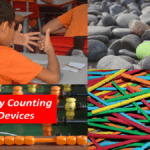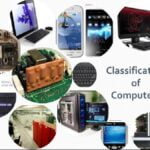If we fail to make creative education part of our schools and society today, we may end up poor and dejected in the nearest future. This is because the future may forget those who rely on paid employment. In fact, those who will rely on paid employment in the nearest future may end up being the poorest in the society. I see poverty knocking at their door.
Are you confused at these statements?
What triggered these statements of mine is the statement of Steve Wozniak, the co-founder of Apple. In an interview, he disclosed that people who focus on studying hard, getting a degree and getting a job may end up not securing employment. According to him, “Lack of creativity and lack of ability to think uniquely is indeed the main reason why there’s so much unemployment.”
The Conversation reported that the UK is stuck in the past in this era of transformation. It is of the view that young people are being taught how to pass exams rather than developing their ingenuity. It made a call, that to thrive and survive in this transformational era, nations need the new da Vinci and Michelangelo.
Rebecca Weicht wrote that there is a deep mismatch between the skills our education systems nurture and the needs of the society. A report presented shows that since 1990 IQ scores have risen while creative thinking has decreased significantly. She is of the opinion that our traditional educational system dumps our creative genius within us because it does not value innovation and entrepreneurial thinking.

Job Market (Image Credit: Techlanta)
Findings by BBC shows that creative subjects are being cut down by many secondary schools in England. According to the report, music, art, drama, design, and technology are being squeezed in most secondary schools. This finding was based on 1200 schools for which 9 out of 10 secondary schools concurred.
Caroline Julian frowned at the drop-in arts and creative subjects in secondary schools noting that, “It is damaging to the future economy because the rise of automation will increasingly require the next generation to be equipped with both creative and technical skills.”

Creative Education (Credits: SI News)
Tim Patston underscored the fact that two key skills are needed in order for one to flourish in the future. These skills include relationship and creative thinking. Tim believes that with these skills, one can be agile and adaptive in an ever-changing world. These skills can be acquired through creative education.
The Essence of Creative Education
Creative education exposes students to the world of problem-solving. It is a system of education that equips students with the ability to control solutions to a problem. In creative education, the students are in control, not the teachers. This is a system of education where students learn and develop skills, ideas and competence levels by solving problems through trials and errors.
As noted in our previous posts, we have created more problems than we can solve. Ironically, the government which is usually looked upon to resolve problems, compound them for the future generations.
For example, in Nigeria, the security problems faced by the citizenry are worsening by the day. In spite of the government’s claim of having things under control, killings are increasing by the day. In addition to Boko Haram, two killing groups have emerged in the present administration: the Herdsmen and Hakika Islamic sect. These groups must be agitating for something that if not resolved today, will compound the problems of tomorrow.
It has been equally highlighted that one reason problems persist is that no one wants to take responsibility. The few who took responsibility have stood out in the society and are seen by the society as gods. Take as an example again. The Nigerian government could not build a working refinery for her citizenry. But Alhaji Aliko Dangote took up the challenge, today he is building the largest refinery in Africa. It is true that we can do same, if we choose to be responsible, no matter how small.

Dangote Refinery (Credits: Naijaparrot)
To stand out in the society requires courage, doggedness and purposeful thinking. These can be achieved through creative education. Creativity and critical thinkers are needed in politics, business, industries, and institutions to solve complex problems emanating as the world advances.
SI News reports that Instead of confining learners to four walls and repetitive study settings, universities are transforming student lives with hands-on activities and practical seminars. By taking on this notion of ‘learning by doing’, they are more likely to understand their module content and leave with the confidence to apply these skills to the working world.
Thus, creative education positions the graduate with requisite skills needed to fly in the job market.
The Role of Parents
How can we become responsible? By becoming a little creative.
From my interaction with parents, I understood that virtually every parent wants the best for their children. However, due to falling living standards, some children may not be allowed to follow their passion. Consider a situation where a family could not afford a three-square meal in a day. In this case, the urge to quench curiosity through erratic discovery in a child will be shattered. Either by the family or by the school he/she attends. This pattern is gradually killing creativity in the lives of our younger generations.

Parent-Child Relationship (Credits: Family Education)
Creative education has become a forgotten past in our system of living. It has been discouraged in our homes and in our institutions of learning. In our homes, parents do not want their children to damage anything, including electronic gadgets. And even when children spoil their toys, they won’t buy a replacement. In fact, they will say that the child is destructive. Some of our parents do not know that these children are only trying to quench their curiosity.
Ken Robinson stated that social change tends to come from the ground up. Parents have a role to play in the creative education of a child. They are the one with a greater responsibility to shape the future of their children. In his words, “Parents can improve the way their children learn, even if our education system does little to boost their free thinking.”
The Education System
The Conversation noted that the education system in the UK is outmoded. Same is applicable to Nigeria, maybe, because Nigeria is the offspring of the UK. The UK and Nigerian education system are based on 3Rs (reading, writing, and arithmetic). This system was designed to enlighten the people so they can make up the workforce.
This was the period when the workforce is made up of those that give and take orders. And this marked the beginning of reliance on the certificate, because success is judged in this system by the outcome of the exams.
In the new era of problem solving and research, dependence on certificate or passing of exam is completely outdated. Research involves 3Cs (Creativity, Critical thinking, and Collaboration), and passing grade does not guarantee success at this level. This is the level where inventions and discoveries are made through an understanding of interdisciplinary, multidisciplinary and transdisciplinary research. This can only be effective through collaboration, creativity, and creative thinking.
In fact, the new 3Rs (Respect, Responsibility, and Relationships) advocates for a teacher-parent-child relationship to create and foster a better learning atmosphere. This system believes that a conducive learning environment will help students to become capable, connected and contributing members of their class, school, family and society.
Modern workforce requires creative skills and mindsets to finding new solutions to complex problems. According to World Economic Forum, social abilities such as coordinating with others, persuasion, and complex problem-solving skills, are essential in the knowledge-based workplace of the near future.

These center on one thing. Developing a system of education where children will be equipped to master and understand the mind. A system that will instill creativity and critical thinking in the lives of our children. Creative education should be the key to educating our future generation.
Ken Robinson advocated that all subjects in a school be given equal prestige. To him, no subject should have higher priority; music and dancing are as important as Mathematics and English. This he believes will enhance creativity in the students.
Like Robinson, Weicht advocates for entrepreneurial education to enhance innovation, creative thinking and growth mindset among students. She believes that with these skills graduates will excel beyond the job market.
To translate creative education into general education, the RISE model was developed. RISE is an acronym for Results, Investigation, Student, and Environment. This model provides a blended approach that enables teachers to develop creative skills in themselves and the students.
Born out of the need for better communication and collaboration in the classroom, Emily Wray developed a RISE (Reflect, Inquire, Suggest, Elevate) model to help elicit meaningful feedback and interaction from students.
These models aimed at helping develop creativity and critical thinking among students.
Another learning model that triggers creativity and critical thinking among students is experiential learning. SI News noted that experiential learning triggers creative sparks among students and encourage them to create and innovate new solutions.
The Lesson from the Past
I remembered my childhood days when I thought of becoming an electrical/electronics engineer. I always damage electronic gadgets, especially while playing with them. Though I don’t damage these gadgets because I was stubborn or rude but because I was curious to know what was inside. I would always want to dismantle and recouple electronic gadgets. Most times, after dismantling them, I may not be able to couple them. Then, we were curious to know who was speaking inside the radio and television. We wanted to know why the fan is rotating. Many times, I touched the fan’s blade and it was not funny. And many more. The same is applicable to our children today. During this period, children are beginning to choose a career path for their life. Though they don’t understand, because they are being predominantly influenced by what they see.
Although I did not end up becoming an electrical/electronics engineer, I still have that urge in me. Often times, I will want to know why an electronic gadget is not working, and attempt to fix it myself. The good news is that I’m not far from an engineer since I’m a computer engineer. Yet, if I was well guided in my childhood, maybe, I would have ended up becoming a certified engineer. Therefore, parents and guidance have a lot of roles to play. All the work must not be left for the school, which a times do not care.
Conclusion
How do we ascertain the level of creativity of our pupils, students, undergraduates? To what extent are they being subjected to problem-solving? It may be difficult to ascertain the level of creativity of our younger generation because there is no room left to show this in our educational institutions.
If I may ask when was the last time you or your child submitted a handwork to his/her school? When was the last time you solved a problem within or out of the box? We always look for already made solutions.
Creative education is gradually becoming a thing of the past in our schools, if not completely wiped out. The students are no longer submitting handworks, there is no room for creativity. Students are rather preferred to pay money for their handwork, where it exists. Teachers are even making a business out of it.
During my primary school days, we had a subject called handwork. When it is time for handwork, we were allowed to do all manner of creative works including; clay molding, broom making, basket making, long baskets, and so on. Though limited to elementary crafts, it was fun. Then, I learned how to make different things including sculpting. It also helped us to learn how to solve problems during emergence.
But in recent times, this is no longer the case. I pray that we may heed to this call and begin engaging our children before it becomes too late.
There is a curiosity in every child because they are predominantly controlled by the Id. Even you as an adult is somehow inquisitive. We do not need to kill this urge in them. if we do, it may affect their future.
Disallowing creative education in our schools and among our children will create more problems for our children children. Please, help our society, help make someone creative, let’s journey into creativity.






